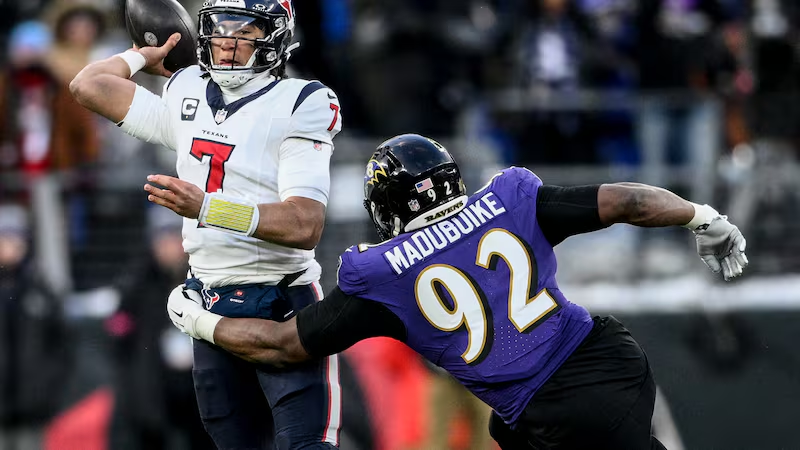
Cynthia Frelund 2024 NFL mock draft 1.0: Bears pass on QB; Commanders land Caleb Williams
I always do my mock drafts a little differently from the traditional method, in that my team-prospect pairings are based on optimizing for wins in the upcoming season — in a structured way. Here’s a quick look at my process:
- I take the best available information about free agency, which right now is admittedly not much more than what we know about player contracts, to predict players’ market value.
- I then check free agents’ projected market value against the anticipated salary-cap space for each team.
- Finally, I add potential free agents or drafted players to different teams and identify which individuals increase teams’ projected win total the most. (My player model leverages historical pre-draft player data to forecast NFL performance.)
I’m starting this process early again this year, which is cool because I am excited to track how things change with free agency and as the draft process evolves. A little housekeeping: I used computer vision-derived measurements and stats in my player evaluations, and all of my speed, burst and advance tracking notes are based on on-field game speed metrics
Chicago Bears:
In this theoretical exercise, the Bears keep Justin Fields and pick this high-floor (aka lowered risk) LT prospect, who has experience but is also young (20 years old) with a ton of upside. Alt just passes receiver Marvin Harrison Jr. in immediate impact for the Bears’ O-line, which allowed their QBs to be pressured at the highest rate in the league last season (45.1 percent). This helps to show the value of the Bears’ first-round equity, which will allow them to move all over the board if they want to.
Washington Commanders:
Williams’ reunion with his former USC coach, Kliff Kingsbury (now Washington’s OC), makes this a higher-upside match than it would have been a week ago (before Kingsbury was hired). I am not sure about the gap other people see between the QBs in this year’s draft, but my evaluation comes down to refinements between styles, opponents, team infrastructure, etc. for the top two, and potentially the top three.
New England:
My models love Maye’s upside for a number of reasons, but one that stands out is the levels/routes he has thrown per computer-vision tracking data. He did not have the most consistent route runners and his ability to connect on many different throw speeds was extremely accurate. His intermediate throws that turned into receptions had a speed variance of about 7 mph. I only looked back for three seasons, but the average for Power Five QBs at the intermediate level is 3.4 mph.







